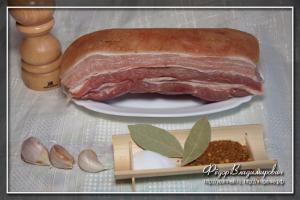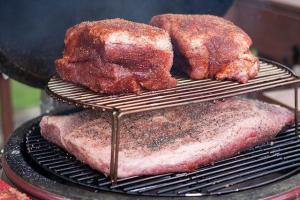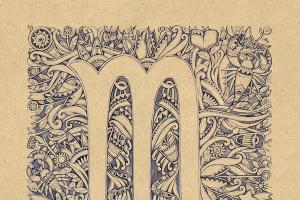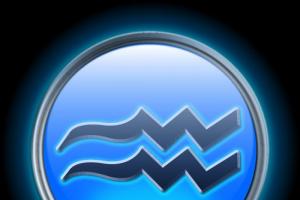Most people who are not directly involved in aviation, seeing this aircraft in flight or standing on the ground, will most likely think: “ What a cute little helicopter!- and immediately make a mistake. In fact, it all ends with external similarity. The fact is that for the flight of a gyroplane and a helicopter, completely different principles are used.
Why does a gyroplane fly?
At the helicopter lift and driving force are created by the rotation of the main rotor(one or more), a permanent drive to which is transmitted from the engine through complex system transmissions. The swashplate changes the plane of the rotating propeller in the desired direction, providing translational movement and maneuvering, adjusting the speed.
A story about another type of ultralight aircraft - also read on our website.
The story about a motorized paraglider and an aerochute is located. Find out what devices there are with soft wing and thrust on the engine.
 The design and principle of operation of a gyroplane is completely different, and probably even more similar to an airplane (glider, trike).
The design and principle of operation of a gyroplane is completely different, and probably even more similar to an airplane (glider, trike).
The lifting force is provided by the oncoming air flow, but a freely rotating propeller acts as a wing(it is usually called a rotor). The forward movement is provided by the pulling or pushing force of the main engine, located, respectively, in front or behind the aircraft. And what gives the rotor rotation is just the oncoming air flow. This phenomenon is called autorotation.
Without a doubt, the principle was suggested by nature itself. You can pay attention to the seeds of some trees (maple, linden), which are equipped with a kind of propeller. Having matured, dried and separated from the branch, they do not fall vertically down. Air resistance spins their “rotors”, and the seeds can be quite long time to plan, flying away from the native tree to very considerable distances. Gravity, of course, takes its toll, and their landing is inevitable. But this is the task of human genius: to find means to control such a flight.
In a gyroplane, power is taken from the engine to the rotor only in the very initial phase of flight, in order to give it the rotation speed necessary for takeoff. Next - a short run-up, rise - and that's it, the law of autorotation comes into force - the rotor rotates completely independently, up to full landing apparatus. Located at a certain angle of attack, it creates the lift necessary for flight.
History of the aircraft
 The first person to seriously engage in research and practical application of the principle of autorotation was the Spanish design engineer Juan de la Cierva. Having begun to engage in aircraft construction at the very dawn of aviation, he had to survive the disaster of his brainchild - a three-engine biplane, and he completely switched to a completely unexplored branch of aeronautics.
The first person to seriously engage in research and practical application of the principle of autorotation was the Spanish design engineer Juan de la Cierva. Having begun to engage in aircraft construction at the very dawn of aviation, he had to survive the disaster of his brainchild - a three-engine biplane, and he completely switched to a completely unexplored branch of aeronautics.
After lengthy tests in a wind tunnel, he also formulated and theoretically substantiated the principle of autorotation. By 1919, the first model had been developed in drawings, and in 1923, the S-4 gyroplane took off for the first time. By design, it was a regular aircraft body, equipped with a rotor instead of wings. After a number of modifications, a small serial production of similar devices was even launched in France, England, and the USA.
 Soviet aircraft designers followed an almost parallel course. In a specially created department special designs(OOK) TsAGI was developing its own gyroplanes. Eventually the first Soviet device KASKR-1 took off in 1929.
Soviet aircraft designers followed an almost parallel course. In a specially created department special designs(OOK) TsAGI was developing its own gyroplanes. Eventually the first Soviet device KASKR-1 took off in 1929.
It was developed by a group of young engineers, which included Nikolai Ilyich Kamov, later - an outstanding aircraft designer of the Ka series helicopters. It is noteworthy that Kamov, as a rule, always took part in the flight tests of his brainchild.
KASKR-2 was already a more mature and reliable machine, which was demonstrated to a representative government commission at Khodynka airfield in May 1931.
Further research and design improvements led to the creation of a production model, which was called R-7. This device was created according to the design of a winged gyroplane, which made it possible to significantly reduce the load on the rotor and increase speed characteristics.
N.I. Kamov not only developed and improved his apparatus, but also constantly looked for it practical use. Already in those years, R-7 gyroplanes carried out pollination of agricultural land.
During the rescue operation to remove Papanin’s first polar expedition from the ice floe in 1938, the Ermak icebreaker had an R-7 ready for takeoff. Although the help of such carrier-based aircraft was not needed then, the fact itself speaks of the high reliability of the vehicle.
Unfortunately, Second World War interrupted many design initiatives in this area. The subsequent craze for helicopter technology pushed gyroplanes into the background.
The gyroplane is at war
 It is clear that in the first half of the last century, during this extremely militarized period, any new developments were considered in terms of their use for military needs. The gyroplane did not escape this fate either.
It is clear that in the first half of the last century, during this extremely militarized period, any new developments were considered in terms of their use for military needs. The gyroplane did not escape this fate either.
The first combat rotorcraft was the same R-7. Given its ability to lift a payload of 750 kg into the air, it was equipped with 3 machine guns, photographic equipment, communications equipment and even a small bomb kit.
Combat squadron of gyroplanes A-7-ZA consisting of 5 units took part in the battles on the Elninsky ledge. Unfortunately, the enemy’s complete dominance in the sky at that time did not make it possible to use these low-speed vehicles for actual reconnaissance during the day - they were used only at night, mainly for scattering propaganda materials over enemy positions. It is significant that the squadron engineer was none other than M.L. miles, future designer Mi series helicopters.
Our opponents also used gyroplanes. A non-motorized vehicle was developed specifically for the needs of the German submarine fleet. Focke-Achgelis FA-330, essentially a kite gyroplane. It was assembled in a matter of minutes, then the rotor was forcibly spun, and the gyroplane took off to a height of up to 220 meters, towed by a moving aircraft. full speed ahead submarine. This flight altitude allowed observation within a radius of up to 50 kilometers.
The British also made bold attempts. In preparation for the upcoming invasion of Northern France, they generally planned to combine a gyroplane with an army combat jeep for landing from a heavy bomber. True, even after fairly successful tests, the issue was dropped.
Advantages and disadvantages of a gyroplane
 The creators of the gyroplane managed to solve a lot of safety and flight efficiency issues that cannot be implemented on airplanes or helicopters:
The creators of the gyroplane managed to solve a lot of safety and flight efficiency issues that cannot be implemented on airplanes or helicopters:
- Loss of speed, for example, when the main engine fails, does not lead to stalling in a “tailspin.”
- Autorotation of the rotor allows you to perform soft landing even with complete loss of translational motion. By the way, this property is also used in helicopters - they provide for the inclusion of an autorotation mode in emergency situations.
- Short takeoff run and landing area.
- Insensitive to thermal flows and turbulence.
- It is economical to operate, easy to build, and its production is much cheaper.
- Controlling a gyroplane is much easier than that of airplanes or helicopters.
- It is practically not afraid of wind: 20 meters per second is normal conditions for it.
There are, of course, a number shortcomings, which enthusiastic designers are constantly working to eliminate:
- There is a possibility of somersault during landing, especially for models with a weak tail.
- The phenomenon called the “dead zone of autorotation”, which leads to the cessation of rotation of the rotor, has not been fully studied.
- Flights on a gyroplane in conditions of possible icing are unacceptable - this can lead to the rotor leaving the autorotation mode.
In general, the advantages far outweigh the disadvantages, which allows us to classify the gyroplane as the safest aircraft.
Is there a future?
 Fans of this type of mini-aviation unanimously answer such a question that the “era of gyroplanes” is just beginning. Interest in them has revived with renewed vigor, and now serial models of such aircraft are being produced in many countries around the world.
Fans of this type of mini-aviation unanimously answer such a question that the “era of gyroplanes” is just beginning. Interest in them has revived with renewed vigor, and now serial models of such aircraft are being produced in many countries around the world.
In terms of capacity, speed and even fuel consumption, the gyroplane boldly competes with conventional passenger cars, surpassing them in its versatility and not being tied to roads.
In addition to the purely transportation function, gyroplanes find their application in carrying out tasks of patrolling forests, sea coasts, mountains, and busy highways; they may well be used for aerial photography, video recording or surveillance.
Some modern models are equipped with a “jumping” take-off mechanism, others allow a successful take-off from a standstill in the presence of winds of more than 8 km/h, which further increases the functionality of gyroplanes.
The leading manufacturer of such devices on the modern market is a German company Autogyro, producing up to 300 cars per year. The Russians are also trying to keep up - they produce in our country whole line serial models: “Irkut” of the Irkutsk Aviation Plant, “Twist” of the flying club “Twister Club”, “Hunter” of the Aero-Astra Scientific and Production Center and others.
The number of fans of this type of sky conquest is constantly growing.
Photo gallery of gyroplanes



Lightweight autogyro DAS-2M.
Developer: V. Danilov, M. Anisimov, V. Smerchko
Country: USSR
First flight: 1987
For the first time, the DAS gyroplane took to the air in a non-motorized version, towed by a Zhiguli car. This happened at one of the agricultural aviation airfields near Tula. But it took more years, during which the designers worked on the engine, before the most experienced LII test pilot V.M. Semenov, after just one run, took the DAS-2M into the air. This event was later noted at SLA competitions. special prize OKB named after M.L.Mil. The device, according to the test pilot, has good flight characteristics and efficient control.
Design.
The fuselage is of a truss, tubular, collapsible design. The main element of the fuselage is a frame consisting of horizontal and vertical (pylon) pipes with a diameter of 75 x 1, made of 30KhGSA steel. Attached to them are a towing device with a lock and an air pressure receiver, an instrument panel, a pilot's seat equipped with a seat belt, a control device, a three-wheeled landing gear with a steerable nose wheel, a power unit mounted on a motor mount with a pusher propeller, a stabilizer, a keel with a rudder, a ball main rotor hinge. An auxiliary tail wheel with a diameter of 75 mm is installed under the keel. The pylon, together with struts with a diameter of 38 x 2, a length of 1260 mm, tubular beams of the main wheels with a diameter of 42 x 2, a length of 770 mm, made of titanium alloy VT-2, and braces with a diameter of 25 x 1, a length of 730 mm made of 30KhGSA steel, form a spatial power frame, in the center of which the pilot is located. The pylon is connected to the horizontal fuselage tube and the main rotor ball joint using titanium gussets. In the area where the gussets are installed, bougies made of B95T1 duralumin are installed in the tubes.
The power unit is with a pusher propeller. It consists of a two-cylinder opposed two stroke engine working volume of 700 cm3 with a gearbox, a pusher propeller and an electric starter, a friction clutch, a rotor pre-spin system, an 8-liter gas tank and an electronic ignition system. The power unit is located behind the pylon, on the motor frame.
The engine is equipped with a redundant electronic contactless ignition system and a tuned exhaust system.
The pushing wooden screw is driven by a V-belt gearbox, consisting of drive and driven pulleys and six belts. To reduce torque unevenness, dampers are installed on the gearbox.
The main rotor with a diameter of 6.60 m is two-bladed. The blades, consisting of a fiberglass spar, foam filling and covered with fiberglass, are mounted with one horizontal hinge on a bushing located on the pylon. At the ends of the blades there are uncontrolled trimmers for adjusting the cone of the main rotor. The driven gear of the pre-spin gear and the main rotor tachometer sensor are installed on the main rotor axis. The gearbox is driven by cardan-spline shafts, an angular gearbox mounted on the pylon, and a friction clutch located on the engine. The friction clutch consists of a driven rubber roller mounted on the axis of the cardan-spline shaft, and a driving duralumin drum located on the engine axis. The friction clutch is controlled using a lever mounted on the control handle.
Changes in roll and pitch are carried out by a handle that affects the position of the lower control fork, connected by rods to the upper fork, which, in turn, leads to a change in the inclination of the rotor rotation plane.
Directional control is carried out by a rudder connected by cable wiring to pedals that control the nose wheel. To compensate for the hinge moment, the rudder is equipped with a horn-type compensator. The rudder and keel of a symmetrical profile are made of 16 plywood ribs 3 mm thick, pine stringers 5 x 5 mm, covered with percale and coated with nitro varnish. Keel installed on horizontal pipe fuselage using anchor bolts and two cable braces.
The gyroplane chassis is three-wheeled. The front steered wheel, measuring 300 x 80 mm, is connected to the pedals using a gear reducer with a gear ratio of 1:0.6 and is equipped with a parking brake drum type diameter 115 mm.
The instrument panel is located on the towing device truss. The instrument panel is equipped with a speed indicator, variometer, altimeter connected to an air pressure receiver, and tachometers for the main and pusher propellers. On the control handle there is a toggle switch for emergency engine stop and a friction clutch control handle. The control levers for the carburetor throttle valve and the device for forced disengagement of the gearbox gears of the pre-spin system are installed on the pilot's seat on the left. The ignition switch is located on the right. To the left of the instrument panel is the parking brake lever. All mechanisms of the gyroplane are driven using cables with Bowden sheaths.
Main rotor diameter, m: 6.60
Max. take-off weight, kgf: 280
Empty gyroplane weight, kgf: 180
Fuel weight, kgf: 7
Specific load, kgf/m2: 8.2
Power point,
-power, hp: 52
-Max. propeller speed, rpm: 2500
-screw diameter, m: 1.46
Speed, km/h,
-take-off: 40
-landing: 0
-cruising: 80
-maximum: 100
Rate of climb, m/s: 2.0.
Autogyro DAS-2M.

Hornet gyroplane drawings. 1997 – development date. The design uses an engine with a power of more than 45 horsepower. Any type of engine is used, for example: boat; motorcycle; snowmobile. In the event of engine failure, emergency independent rotation of the main rotor is activated, and landing is performed, which ensures high pilot safety.

Technical characteristics of the gyroplane (the engine used on the model is Rotex 447):
- rotor (diameter), mm – 7320;
- propeller, mm – 152;
- height, mm – 2280;
- width, mm – 1830;
- lifting weight, t – 0.280;
Weight, t – 0.160;
- maximum speed, km/h – 102;
- operating speed, km/h – 80;
- tank capacity, l – 20;
- flight range, km – 90.

The gyroplane is kept in the air thanks to the rotor (carrying). The propeller is driven by the flow of oncoming air, and not by the engine. The horizontal movement of the structure is carried out by an additional screw mounted on the horizontal axis of rotation.
Gyroplane is another name for a flying structure. Not all gyroplane models can take off vertically. Most models require a runway no more than 30 meters long.
In order to start assembling something with your own hands, you need to understand the basics. What is a gyroplane? This is an aircraft that is ultra-light. He is a rotorcraft air model, which during flight rests on the bearing surface, freely rotating in the autorotation mode of the main rotor.
Autogyro: characteristics
This invention belongs to the Spanish engineer Juan de la Cierva. This aircraft was designed in 1919. It is worth saying that at that time all the engineers tried to build a helicopter, but this is exactly what happened. Of course, the designer did not decide to get rid of his project, and in 1923 he produced the world's first gyroplane that could fly due to the autorotation effect. The engineer even created his own company, which was engaged in the production of these devices. This continued until modern helicopters were invented. At this point, gyroplanes lost their relevance almost completely.
DIY gyroplane
Once the mainstay of aircraft, today the gyroplane has become a relic of history that can be assembled with your own hands at home. It is worth saying that this is a very good option for those people who really want to “learn to fly.”
To construct this aircraft, there is no need to buy expensive parts. In addition, to assemble it you will not need special equipment, a large room, etc. You can even assemble it in an apartment, if there is enough space in the room and the neighbors do not mind. Although a small number of gyroplane elements will still need to be processed on a lathe.
Otherwise, assembling a gyroplane with your own hands is a fairly simple process.

Despite the fact that the device is quite simple, there are several types of this design. However, for those who decide to create it themselves and for the first time, it is recommended to start with a model such as a gyroplane.
The disadvantage of this model is that to lift it into the air you will need a machine and a cable about 50 meters long or more, which can be attached to a car. Here you need to understand that the flight altitude on a gyroplane will be limited by the length of this element. Once such a glider is airborne, the pilot must be able to release the cable.
Once detached from the vehicle, the aircraft will slowly glide downward at an angle of approximately 15 degrees. This necessary process, since it will allow the pilot to develop all the necessary piloting skills before going on a real, free flight.
Basic geometric parameters of a gyroplane having a landing gear with a nose wheel

In order to move on to real flight, you need to add one more part to the gyroplane with your own hands - an engine with a pushing propeller. The maximum speed of a device with this type of engine will be about 150 km/h, and the maximum altitude will increase to several kilometers.
Aircraft base
So, making a gyroplane with your own hands must begin with the basics. The key parts of this device will be three duralumin power elements. The first two parts are the keel and axle beams, and the third is the mast.
A steerable nose wheel will need to be added to the keel beam at the front. For these purposes, you can use a wheel from a sports microcar. It is important to note that this part must be equipped with a braking device.
Wheels must also be attached to the ends of the axle beam on both sides. Small wheels from a scooter are quite suitable for this. Instead of wheels, you can mount floats if you plan to use the gyroplane as a means of towing a boat.
In addition, one more element must be added to the end of the keel beam - a truss. A truss is a triangular structure that is made up of duralumin corners and then reinforced with rectangular sheet overlays.
We can add that the price of a gyroplane is quite high, and making it yourself is not only feasible, but also helps to save a lot of money.

Keel beam elements
The purpose of attaching the truss to the keel beam is to connect the apparatus and the vehicle via a cable. That is, it is put on precisely this part, which must be arranged so that the pilot, when he pulls on it, can immediately free himself from the grip on the cable. In addition, this part serves as a platform for placing on it the simplest flying instruments - an airspeed indicator, as well as a lateral drift indicator.
Under this element there is a pedal assembly with cable wiring to the steering wheel of the vehicle.
A homemade gyroplane must also be equipped with an empennage located at the opposite end of the keel beam, that is, at the rear. The plumage is understood as a horizontal stabilizer and a vertical one, which is expressed through the keel with the rudder.
The last tail piece is the safety wheel.

Frame for gyroplane
As mentioned earlier, the frame of a homemade gyroplane consists of three elements - a keel and axial beam, as well as a mast. These parts are made from duralumin pipe, with a cross-section of 50x50 mm, and the wall thickness should be 3 mm. Typically, such pipes are used as a base for windows, doors, storefronts, etc.
If you don’t want to use this option, you can construct a gyroplane with your own hands using box-shaped beams made of duralumin corners, which are connected using argon arc welding. The best option the material is considered D16T.

When setting markings for drilling holes, you must ensure that the drill only touches the inner wall, but does not damage it. If we talk about the diameter of the required drill, then it should be such that the MB bolt model fits into the hole as tightly as possible. Carry out all the work in the best way electric drill. Use manual option inappropriate here.
Assembling the base
Before you begin assembling the base, it is best to draw up a drawing of the gyroplane. When drawing it up and subsequently connecting the main parts, it is necessary to take into account that the mast should be tilted slightly back. In order to achieve this effect, the base is slightly filed before installation. This must be done so that the rotor blades have an angle of attack of 9 degrees when the gyroplane is simply standing on the ground.

This point is very important, since ensuring desired angle will create the necessary lifting force even at a low speed of towing the device.
The location of the axial beam is across the keel beam. Fastening is also carried out to the keel beam using four Mb bolts, and for greater reliability they should be equipped with locked split nuts. In addition, to increase the rigidity of the gyroplane, the beams are connected to each other by four braces made from angle steel.
Back, seat and chassis
In order to attach the frame to the base, you need to use two 25x25 mm duralumin corners at the front, attaching them to the keel beam, and attach them to the mast at the back using a 30x30 mm steel corner bracket. The backrest is screwed to the seat frame and to the mast.
This part is also fitted with rings that are cut from the rubber inner tube of the wheel. Most often, a truck wheel inner tube is used for these purposes. A foam cushion is placed on top of these rings, which is tied with ribbons and covered with durable fabric. It is best to put a cover on the back, which will be made of the same fabric as the seat.
If we talk about the chassis, the front strut should look like a fork, which is made of sheet steel, and also have a kart wheel that rotates around a vertical axis.
Gyrocopter rotor and price
A very important requirement for stable operation of an aircraft is the smooth operation of the rotor. This is very important, since a malfunction of this part will cause the entire machine to shake, which will greatly affect the strength of the entire structure, interfere with the stable operation of the rotor itself, and also disrupt the adjustment of parts. To avoid all these troubles, it is very important to properly balance this element.
The first balancing method is to process the element as a whole, like a regular screw. To do this, it is necessary to very firmly secure the blades to the bushing.
The second method is to balance each blade separately. In this case, it is necessary to achieve the same weight from each blade, and also to ensure that the center of gravity of each element is at the same distance from the root.
The price of a gyroplane manufactured at the factory starts from 400 thousand rubles and reaches 5 million rubles.
As a child, a child is always asked – who does he want to be? Of course, many answer that they want to be pilots or astronauts. Alas, with the advent of adulthood, childhood dreams evaporate, family is a priority, making money and realizing a child’s dream fades into the background. But if you really want to, you can feel like a pilot - albeit for a short time, and for this we will construct a gyroplane with our own hands.
Any person can make a gyroplane; you just need to have a little understanding of technology, a general understanding will suffice. There are many articles on this subject and detailed guides, in the text we will analyze gyroplanes and their design. The main thing is high-quality autorotation during the first flight.
Autogyroplanes - assembly instructions
An autogyroplane rises into the sky using a car and a cable - a design similar to the flying kite that many, as children, launched into the sky. The flight altitude is on average 50 meters, when the cable is released, the pilot on the gyroplane is able to glide for some time, gradually losing altitude. Such short flights will give you a skill that will be useful when controlling a gyroplane with an engine; it can gain altitude up to 1.5 km and a speed of 150 km/h.
Autogyros - the basis of the design
For flight, you need to make a high-quality base in order to mount the remaining parts of the structure on it. Keel, axial beam and mast made of duralumin. In front is a wheel taken from a racing kart, which is attached to the keel beam. FROM two sides of scooter wheels, screwed to the axle beam. A truss is installed on the keel beam in front, made of duralumin, used to release the cable when towing.

There are also the simplest air instruments - a speed and lateral drift meter. Under the dashboard there is a pedal and a cable from it that goes to the steering wheel. At the other end of the keel beam there is a stabilizing module, rudder and safety wheel.
- Farm,
- towbar mounts,
- hook,
- air speedometer,
- cable,
- drift indicator,
- control lever,
- rotor blade,
- 2 brackets for the rotor head,
- rotor head from the main rotor,
- aluminum bracket for fastening the seat,
- mast,
- back,
- control knob,
- handle bracket,
- seat frame,
- control cable roller,
- bracket for fastening the mast,
- strut,
- upper brace,
- vertical and horizontal tail,
- safety wheel,
- axial and keel beam,
- fastening the wheels to the axle beam,
- lower brace from a steel angle,
- brake,
- seat support,
- pedal assembly.
Autogyros - the process of operation of a flying vehicle
The mast is attached to the keel beam using 2 brackets; near it there is a pilot’s seat - a seat with safety straps. A rotor is installed on the mast, it is also attached with 2 duralumin brackets. The rotor and propeller rotate due to the air flow, thus producing autorotation.

The glider control stick, which is installed near the pilot, tilts the gyroplane in any direction. Autogyroplanes are a special type of air transport; their control system is simple, but there are also some peculiarities: if you tilt the handle down, instead of losing altitude, they gain it.
On the ground, gyroplanes are controlled using the nose wheel, and the pilot changes its direction with his feet. When the gyroplane enters autorotation mode, the rudder is responsible for control.
The rudder is a braking device bar that changes its axial direction when the pilot presses his feet on its sides. When landing, the pilot presses the board, which creates friction against the wheels and reduces speed - so primitive brake system very cheap.
Autogyros have a small mass, which allows you to assemble it in an apartment or garage, and then transport it on the roof of a car to the place you need. Autorotation is what needs to be achieved when designing this aircraft. It will be difficult to build an ideal gyroplane after reading one article; we recommend watching a video on assembling each part of the structure separately.








